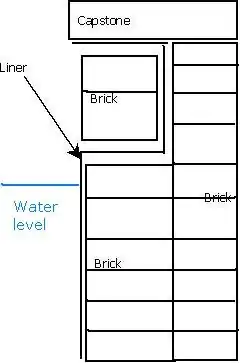I'm building a fairly large raised brick pond in the back garden. It's walled on both the inside and outside of the pond, so you can't see the foil.
the wall stretches out about 7,5 meters (24ft) round, and is about 1 meter (3ft) tall. The wall is cemented, and flushed afterwards with normal mortar (based on portland cement)
- Does the water eventually break down the interior wall? I know it will inevitably damage it by time, but will the wall hold?
- Does the water get effected by the mortar in such a way that it won't get 'clean'. (for plant growth purposes only)
The first year, only waterplants will inhabit the pond.
Different sources give different perspectives: some say to clean the dried wall with vinegar, others say that I have to fill the pond with water, adding 1 liter of vinegar with every 100 liter water... others say don't do anything. What to do?
